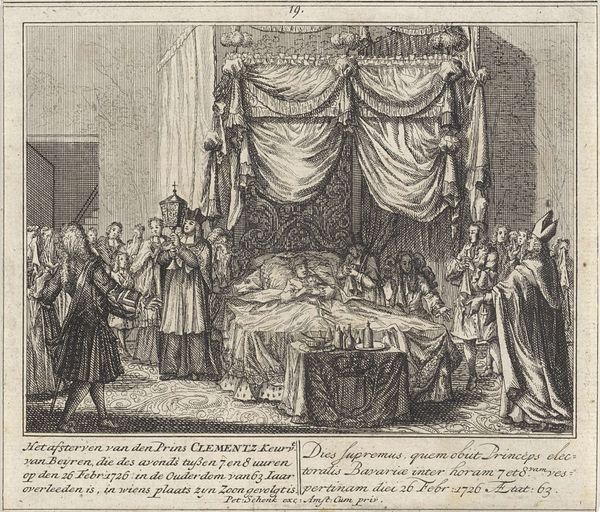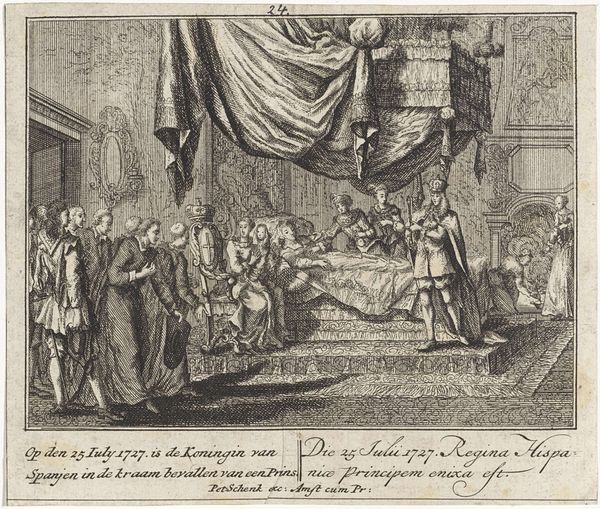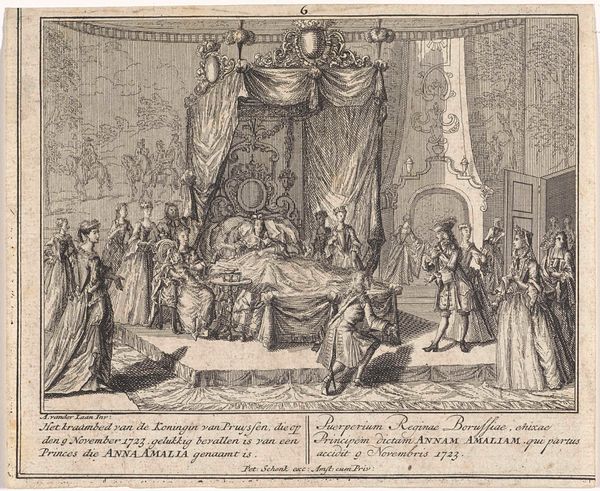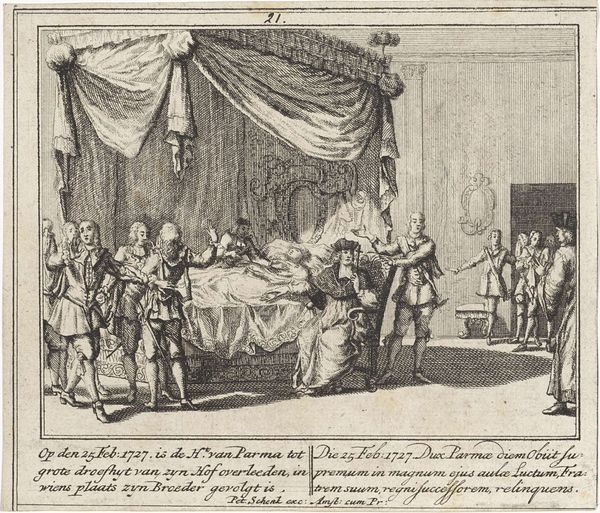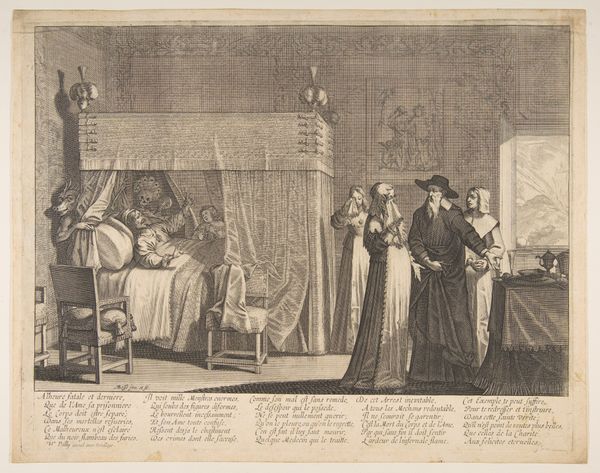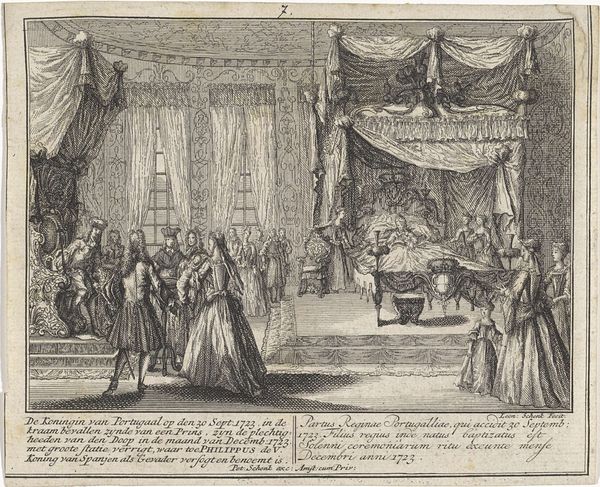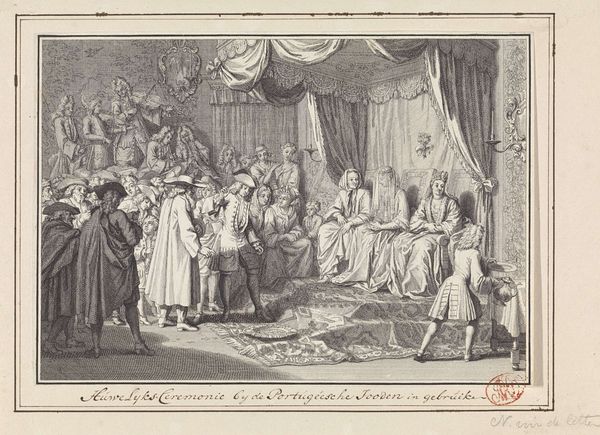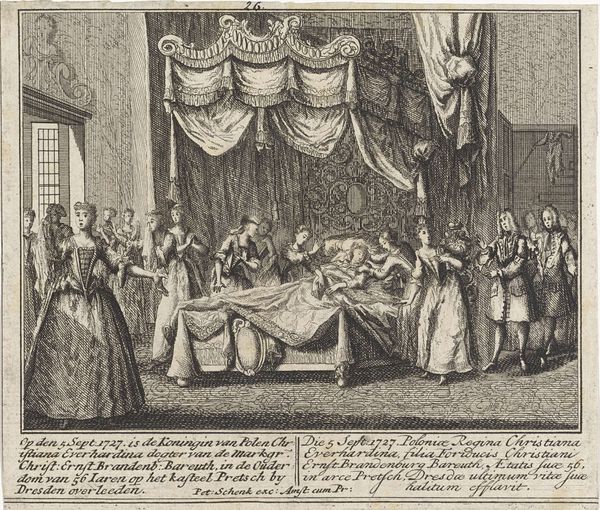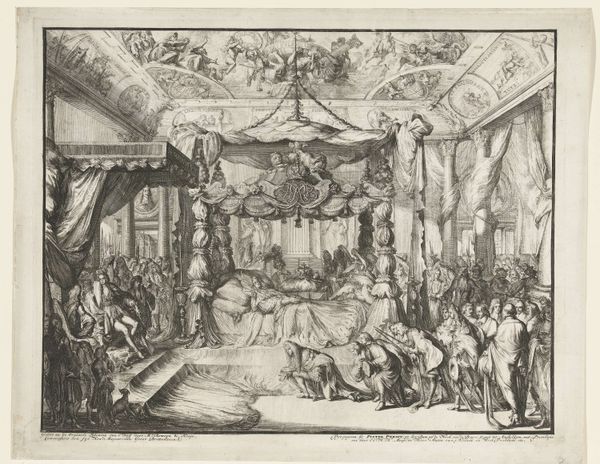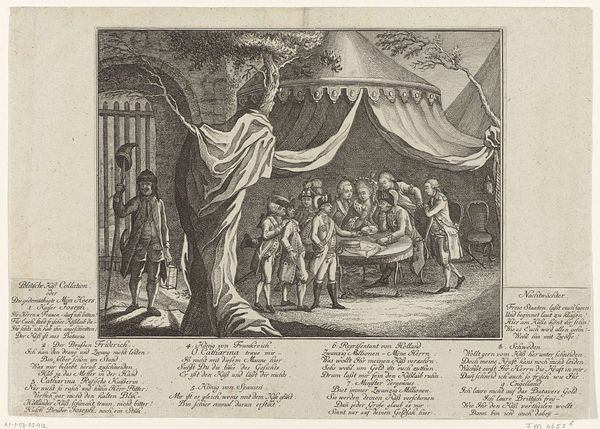
print, engraving
#
portrait
#
baroque
# print
#
genre-painting
#
history-painting
#
engraving
Dimensions: height 154 mm, width 187 mm
Copyright: Rijks Museum: Open Domain
Curator: Here we see "Sterfbed van George I van Groot-Brittannië," or "Deathbed of George I of Great Britain," an engraving made in 1727 by Leonard Schenk. Editor: Immediately, I'm struck by the stillness. It's a dramatic scene, of course, with all the figures clustered around the bed, but everything, everyone, feels... paused, suspended. It’s the quiet that falls after a storm, maybe. Curator: Precisely. This work captures not only the death of a monarch but also a pivotal moment in British history. George I’s reign marked the beginning of a significant shift in power from the crown to Parliament. The deathbed scene becomes a stage for witnessing that transfer. Editor: The composition really amplifies that sense of witnessing history. Everyone's angled toward the central figure on the bed. The two men adjusting the candles almost frame the deathbed as a kind of altar. Though maybe that’s just the cynicism talking today. Curator: No, I think you are right to observe the sense of ceremony. These scenes, though ostensibly private, were meticulously recorded and circulated as prints like this one. Think about the implications—the public consuming a depiction of a monarch's death in their homes! It reifies ideas about dynastic transitions and royal mortality for the broader populace. Editor: Funny, isn't it? How this intimate moment becomes, in a way, democratized through printmaking. Though, of course, who had access to these prints then becomes the new question of accessibility... I suppose this wasn't exactly "death of the king as influencer" type democratization we see today with paparazzi shots. Curator: Absolutely. The distribution of these prints reveals networks of power and patronage. And let’s not forget that this is the Baroque period—it’s an image deliberately crafted to invoke emotion and awe, designed to serve both commemorative and political functions. Editor: Still, all that contextual consideration aside, as a work of art I just appreciate the simple fact it's quite moving. It evokes, I don’t know… our shared fate? And a world in flux. Death makes good theater, or at least, good art. Curator: Indeed, it makes for a compelling reflection on history and our place within it. Editor: Definitely food for thought. Thanks for highlighting that with me.
Comments
No comments
Be the first to comment and join the conversation on the ultimate creative platform.
